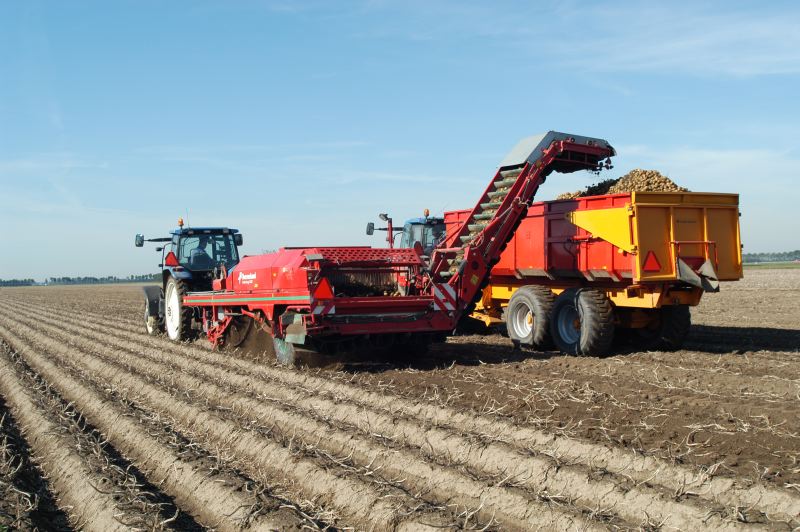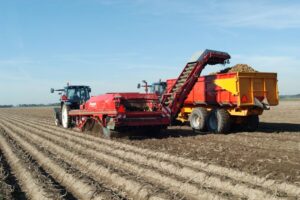
New Netherlands regulation raising global concerns
A new environmental directive in the Netherlands has some Dutch potato farmers worried about potential effects on harvest timing and crop quality.
Under the new directive, effective as of this year, potatoes grown on sandy soil have to be harvested — and catch crops put in place — before Oct. 1. Catch crops, known as cover crops in America, are fast-growing intermediate crops that take up and keep nitrogen compounds from entering groundwater.
The aim of the regulation set by Minister of Agriculture Piet Adema is to protect groundwater against pollution from nitrates and nitrogen compounds from agricultural sources. Industry experts, though, are worried that the regulation will create a shortage of processing potatoes for french fries, while farmers are concerned about being penalized for harvesting after the Oct. 1 deadline.

Andries Middag, director of the Dutch Potato Processors Association (VAVI), said the rule could mean the end of the country’s potato production on sandy soil, as extra time is often needed for crops to ripen and harden.
While the Dutch potato sector is efficient, processors do not have the storage or processing capacity to deal with the over 40,000 hectares (98,842 acres) of processing potatoes produced on sandy soil that will need to be harvested before Oct. 1, Middag said.
But potatoes are not ready for processing at that time, and investing in storage capacity could cost the sector up to €3 billion ($3.3 billion), Middag said.
The Netherlands has around 3,000 potato growers producing 4 billion kilos (8.8 billion pounds) of potatoes for the processing industry each year.
While it’s not forbidden to harvest after Oct. 1, those who do so will incur a penalty that further limits fertilizer use in the coming years. Growers who harvest between Oct. 4 and Oct. 14 will receive a penalty of 5 kilograms per hectare. Between Oct. 15 and Oct. 31, the penalty increases to a 10-kilogram reduction. Those who harvest after Nov. 1 receive a 20 kg/ha penalty.
Arable farmers on non-sandy soil were able to produce scientific data that exempted them from the new regulation, but sandy-soil research conducted by Wageningen University and Research took longer to finalize. The results, submitted to the government earlier this year, show little difference in water quality when catch crops are sown before Oct. 1 or as late as Oct. 15.
“The official reply is that they still need to review the research,” Middag said. “But the policy is already in place.”
The new directive, as it stands now, will impact more than 50% of Dutch potato growers who produce for the processing sector. Of those farmers, data shows 85% harvested after Oct. 1 between 2012 and 2021. That’s up from 55% before 2011. Middag said the increase has to do with shifting climate patterns.
The direct consequences of the directive will not be seen immediately, Middag said. In the long-term, though, his fear is that Dutch processors, who currently rely on local farmers for 50% of the potatoes they use, will have to seek out new sources or close their factories.
Arjen Brak, policy advisor for LTO, the largest farmers’ union in the Netherlands, said he’s certain sandy-soil producers will not be able to meet the goals set out by the government.
“We expect most farmers will follow nature,” said Brak, meaning they will opt to harvest at the most optimal time and incur the penalty when they do. To do otherwise would mean a massive reduction in yield for them, he said.
The Dutch government has shown no sign of wavering on the regulation. In fact, Brak expects regulations will get stricter in the coming years.
There is precedent for such sweeping environmental regulations in the country and throughout the European Union. The Dutch nitrate directive began in 1990. Every four years, the government implements a new action plan aimed at improving water quality, but the plan often contains even tighter regulations with unmet targets, Brak said.
LTO and its farmer members are pushing policymakers for more targeted control. “The measurements get stricter every year because the water quality goals are not reached,” he said. “If you set a target and the entrepreneur knows what the quality of the water is just by measuring, then awareness is created.”
As of June, neither Brak nor Middag knew whether the Dutch government would review the results of the Wageningen UR study.














